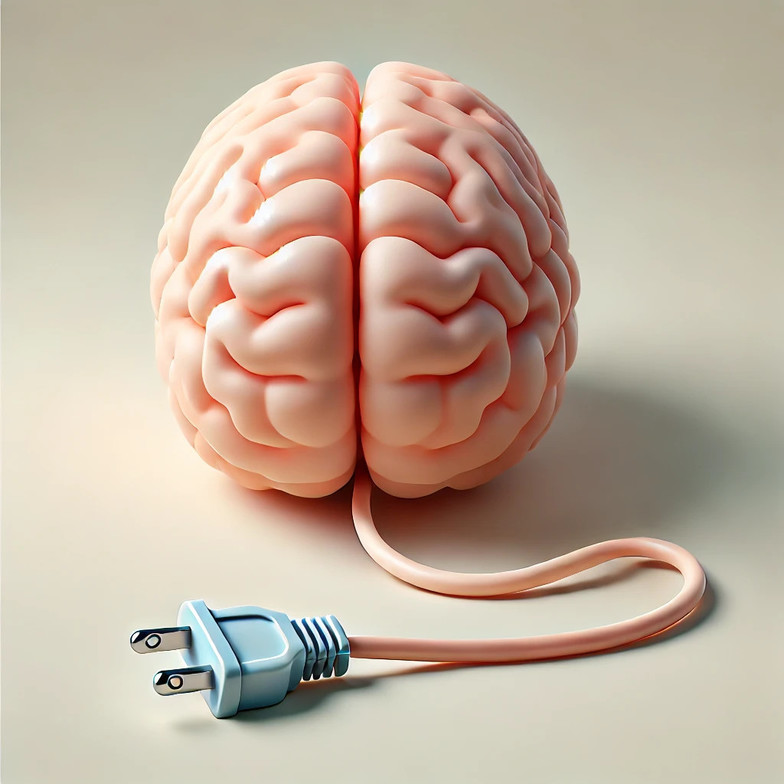
Your nervous system is brilliant!
It’s designed to assess your environment and help you respond—quickly, efficiently, and in a way that keeps you safe. But most of us weren’t raised in environments that taught us how to work with it. We were taught to be calm, be normal, push through—but not how to recognize what our body is trying to tell us.
Let’s start with how the nervous system is supposed to work. It constantly scans for safety or threat. It’s flexible—able to shift between action and recovery. And it’s meant to move through states, not get stuck in them.
But that’s not how it goes for most of us. Our childhood environments weren’t consistent. One day something was okay, the next it wasn’t. Emotions weren’t explained or modeled. Adults gave us mixed messages about what was acceptable or safe.And when that happens, your nervous system adapts. It learns how to survive—not how to thrive. It forms patterns based on survival—not balance. And over time, those patterns become so normal, you don’t even notice them.
So what looks like being ‘high functioning’ might actually be hypervigilance. What feels like ‘I’m just sensitive’ might be a system that was never given safe room to feel. And what we label as burnout, anxiety, or low energy? Sometimes it’s just dysregulation that’s been there all along.
For me, I grew up in a house that felt unpredictable. My dad had a temper, and I learned early that if I wanted to stay safe, I needed to stay ahead of it. I watched everything—the tone of his voice, the time of day, the sound of his footsteps. I adjusted, constantly.That made me good at a lot of things. I’m a great problem solver. I can read people and situations fast. I am high-functioning. But I was also deeply dysregulated.
It wasn’t until years later—after long COVID, a neck injury, and the tragic loss of my brother—that it all caught up with me. The things I used to rely on weren’t working. My body felt unpredictable. And nothing made sense.That’s when I saw it: this wasn’t just burnout. It wasn’t just illness. It was dysregulation. And not just for me—we are all moving in and out of dysregulation all the time. But the only time we pay attention is when things are falling apart. When we feel awful. When we can’t keep going. That’s when we try to manage it.
But what if we didn’t wait until we crashed? What if we had a new lens for seeing our nervous system—and a new foundation for responding to it?
Your nervous system is doing something right now. It’s regulating your heart rate. Your breath. Your digestion. Your brain’s alertness. It’s adjusting to how safe or unsafe it feels in this very moment—even if nothing looks wrong on the outside.And here’s what most people don’t realize: all of this is happening automatically. Based on patterns that started forming the moment you were born. From day one, your system started tracking everything—looks, tones, experiences, feedback. What gets connection? What doesn’t? What keeps you safe? What leads to pain? And those inputs laid down neural pathways—like trails in the woods.The more your system walked those trails, the more defined they became.
That’s why you can’t just “think your way” into healing. That’s why rest isn’t always enough. That’s why you might feel like nothing you’re doing is working—because your nervous system is still operating from the wiring it laid down years ago.
And even for people who’ve done therapy, EMDR, inner child work, or years of personal development—this part is usually missing.You may have explored your childhood, processed your past, and worked to reframe old beliefs… but we’re not taught to observe our nervous system daily—like brushing our teeth or taking a shower.We usually start paying attention only when we’re struggling—when we’re anxious, exhausted, reactive, or burned out. But your nervous system is always responding. And learning to observe it in real time—when you’re steady, when you’re activated, when you’re shifting—is what allows true change to happen. This isn’t about going back and reliving the past. It’s about learning to see what your body is doing now, so you can respond differently moving forward.
And all the things you’re already doing—your movement, your therapy, your food, your rest—they matter. Keep doing them. This isn’t a replacement. This simply gives you a clearer lens, a more realistic framework, and the permission to treat self-observation as a foundational part of how you care for yourself, no matter how you feel in the moment.
What I teach is a model of health that starts with observing—not fixing. It’s not one-size-fits-all. It’s not a quick fix. But it works—because it helps you actually see what’s going on.
It gives you a way to track your patterns, understand your energy, and work with your body instead of against it.And once you start seeing it, things start making sense.
What are your next steps?
Curious about your own patterns? Take my [Free 3-Minute Self Check-In]
Want to hear this episode in it's entirety? Check out Episode 4 from The Dysregulation Podcast here.

Dori Brown
Owner of Seeds of Change, Physical Therapist, Functional Medicine Practitioner, Nutrition Response Tester, Owner of doribrown.me
Contact Me




